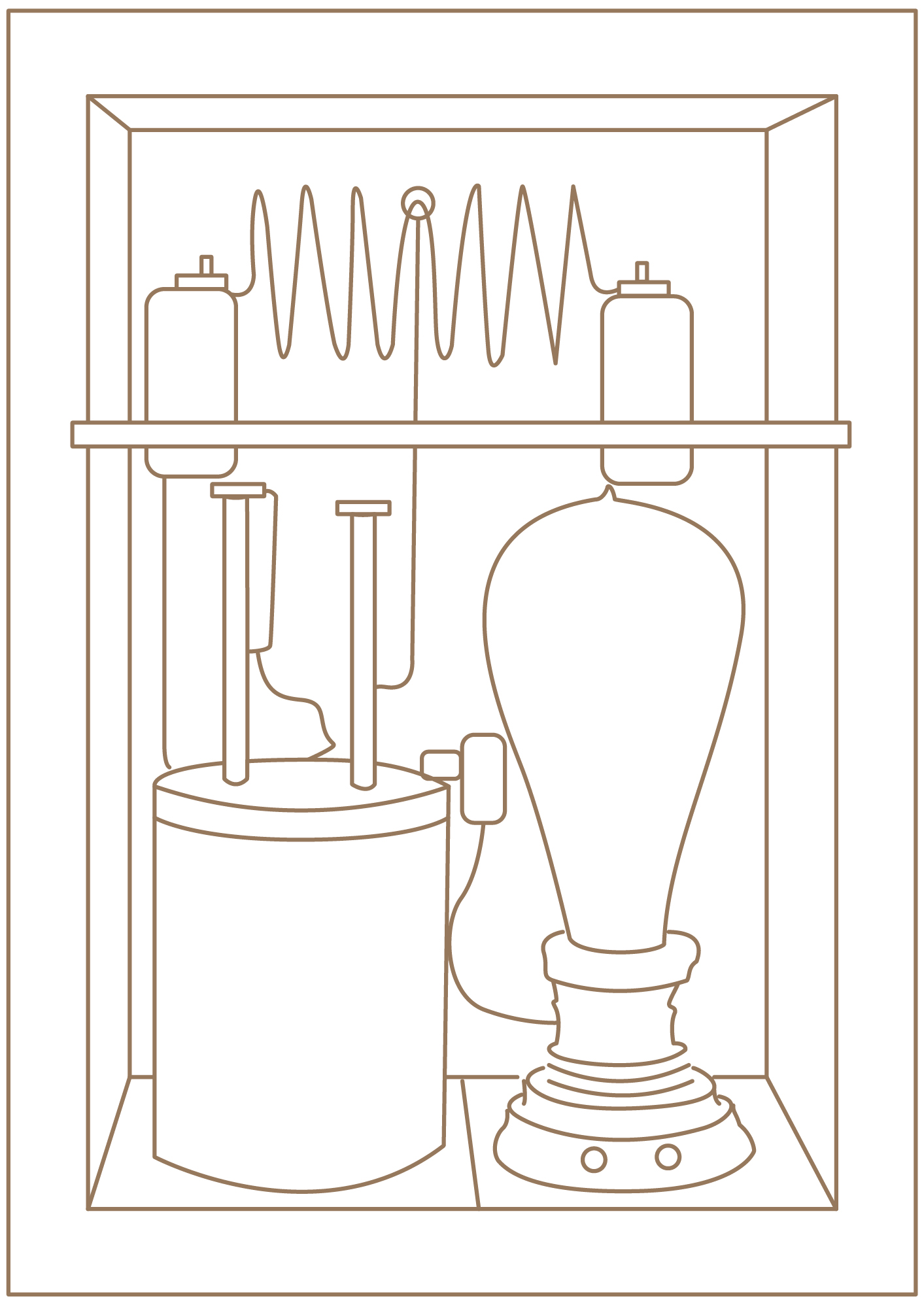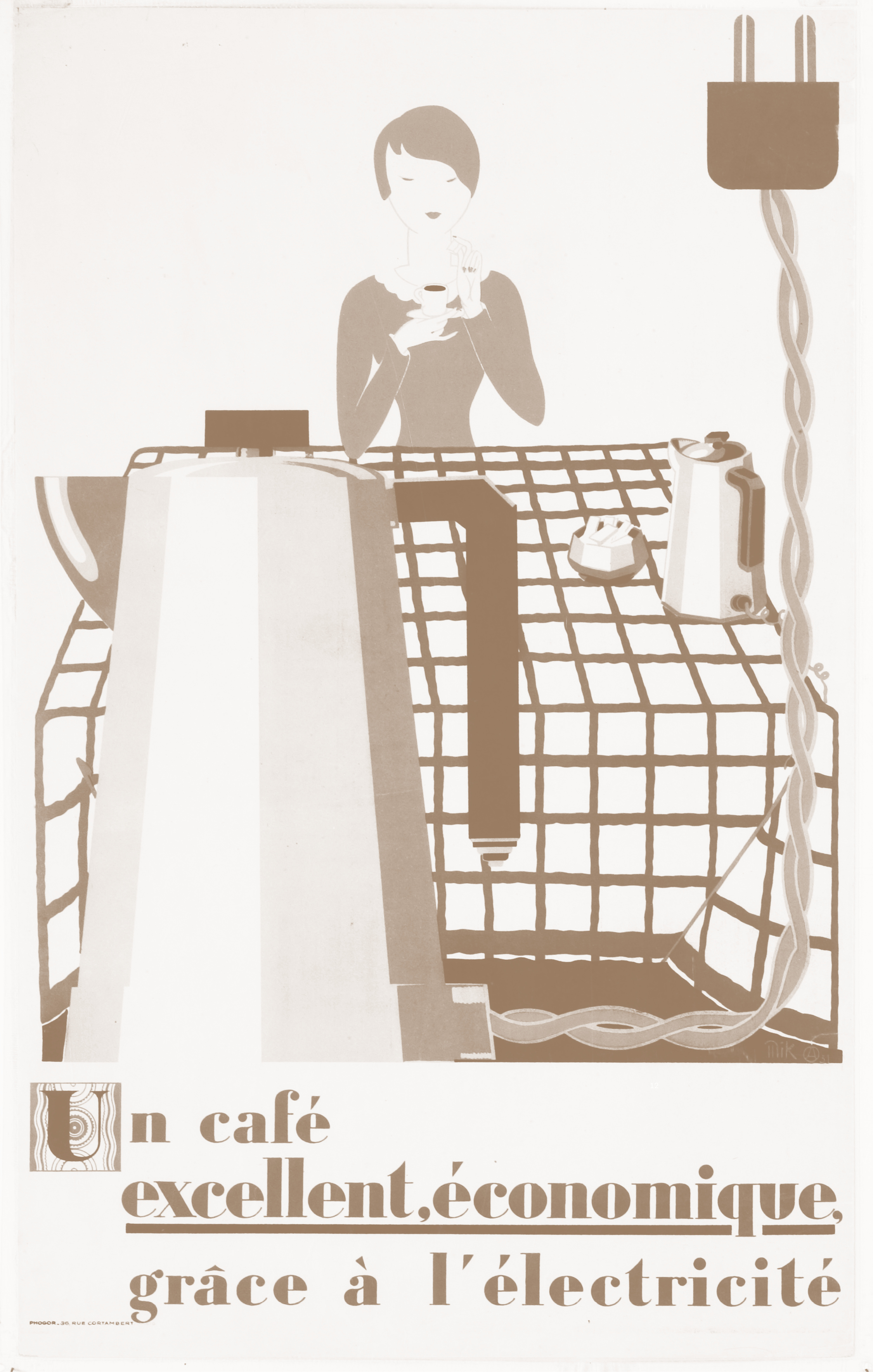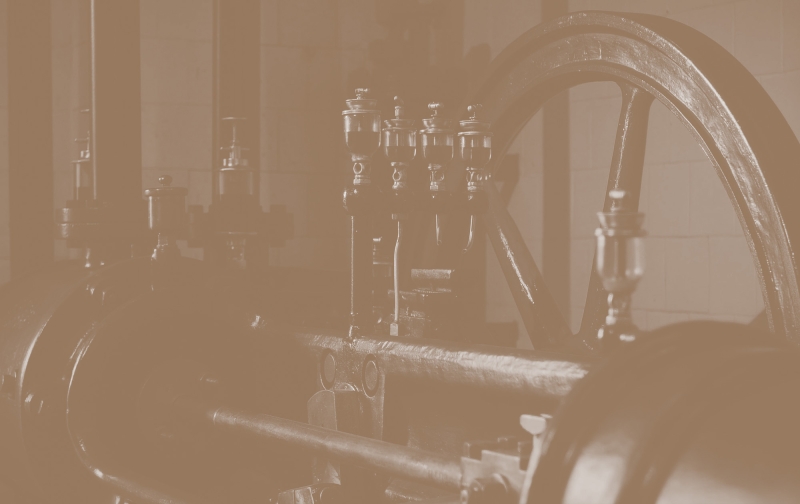The Central Tejo power station is a unique monument of our industrial heritage, and a window onto the great cycle of centralised energy production based on fossil fuels. The energy produced here was distributed to a wide range of consumers via a complex network in a one-way flow of energy measured by a meter, the counting instrument that transformed energy into a commodity. The energy transition currently underway reorganises the flows of this network and its market, generating energy from cleaner and renewable sources and allowing the consumer to be also a producer, through microgeneration and self-consumption. This new social contract, in which the consumer can be a producer or even self-sufficient, and in which energy seeks not to compromise our common future, requires meters that work in two directions, better suited to its multiplicity and reciprocity. Old electricity meters tell the histories of the energy they once measured.
These Storytelling Meters, these objects with stories inside, are windows aggregating new narratives. Each meter tells a part of the story: from collection to tariffs, from production to the domestic appliances animated by electricity, from public lighting to electric mobility, from network management to defence against fraud, or from mechanical metering to electronic metering. Each one of these meters brings together objects, instruments and documents that tell its biography, and each of these episodes is a temporary constellation within the technological collection of the EDP Foundation and maat – Museum of Art, Architecture and Technology, a story that opens the door to many others, to new ways of looking at the History of Energy and to give renewed energy to the museum.
All views of the exhibition “Storytelling Meters” (maat, 24/04–07/03/2022) by Daniel Malhão. Courtesy of EDP Foundation / maat. Exhibition design by Pedrita + Furo and graphic design by Lisa H. Moura.

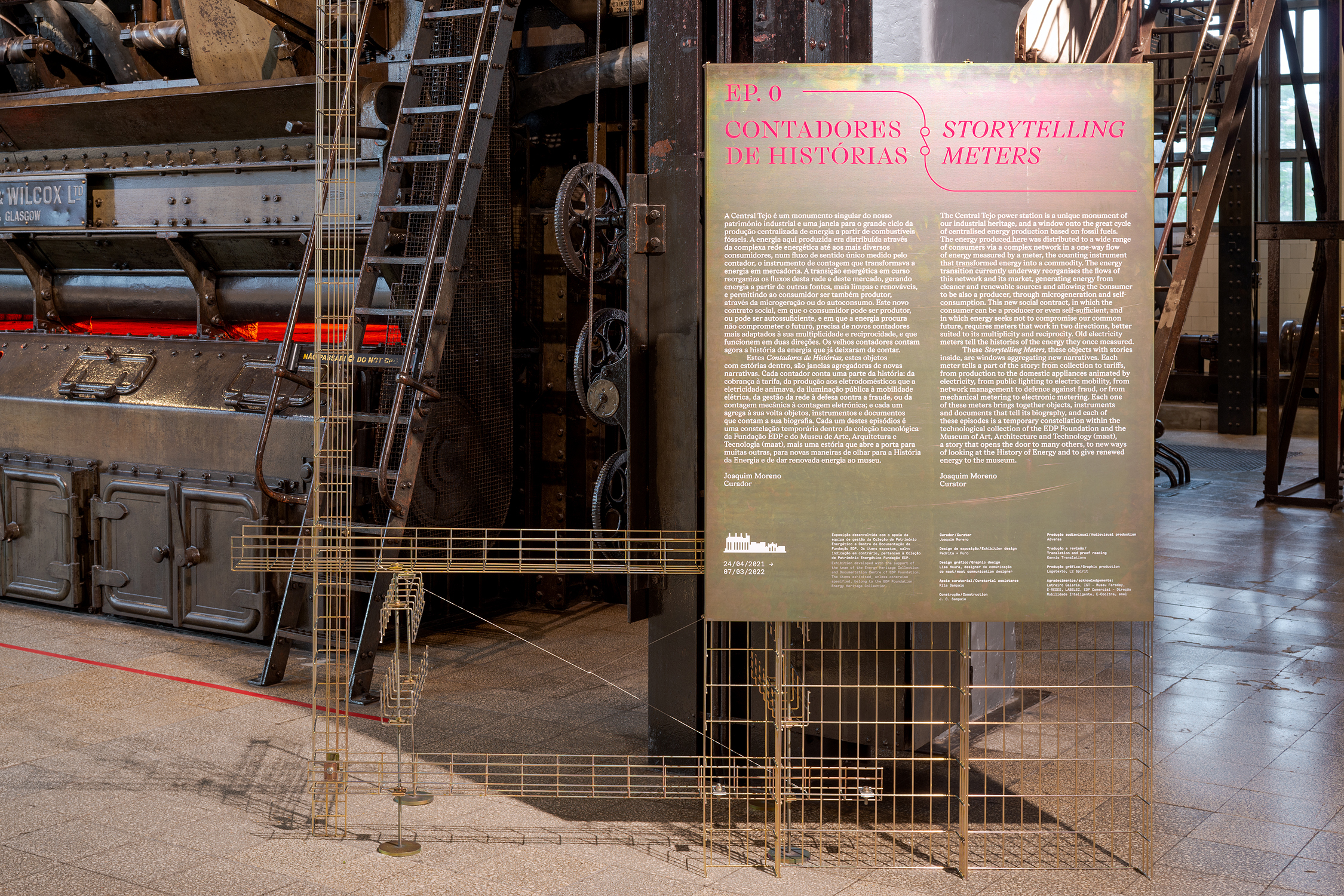 |
 |
EP. 1
EDISON CHEMICAL METER, 1882
Tally Up
The replica of Thomas Edison’s 1882 meter is essential to maat’s narrative as a technological museum, dedicated also to telling the story of electrification, of the moment when it became possible to transmit and consume energy. This instrument of metering and recording transforms a system of production, distribution and consumption into a business and a service. The meter is not essential to the system, but it is fundamental to the contract that allows the grid to be installed, and for societies and territories to be electrified.
Installing a new form of energy in society requires knowledge transmission and dissemination. Novelty needs publicity to find its consumers.
|
|
EDISON CHEMICAL METER REPLICA, 1882
Called a Chemical Meter because it worked on Michael Faraday’s principle of electroplating, in which the direct current running through it carried copper from one plate to another, this meter was unreliable and little used. But it invented, however, the need for a metering instrument. |

Prototypes of Edison and Swan lamps, the first carbon-filament incandescent lamps. Patent registered by Thomas Edison and Joseph Swan, c. 1880. Photos: Daniel Malhão. Courtesy of EDP Foundation / maat.
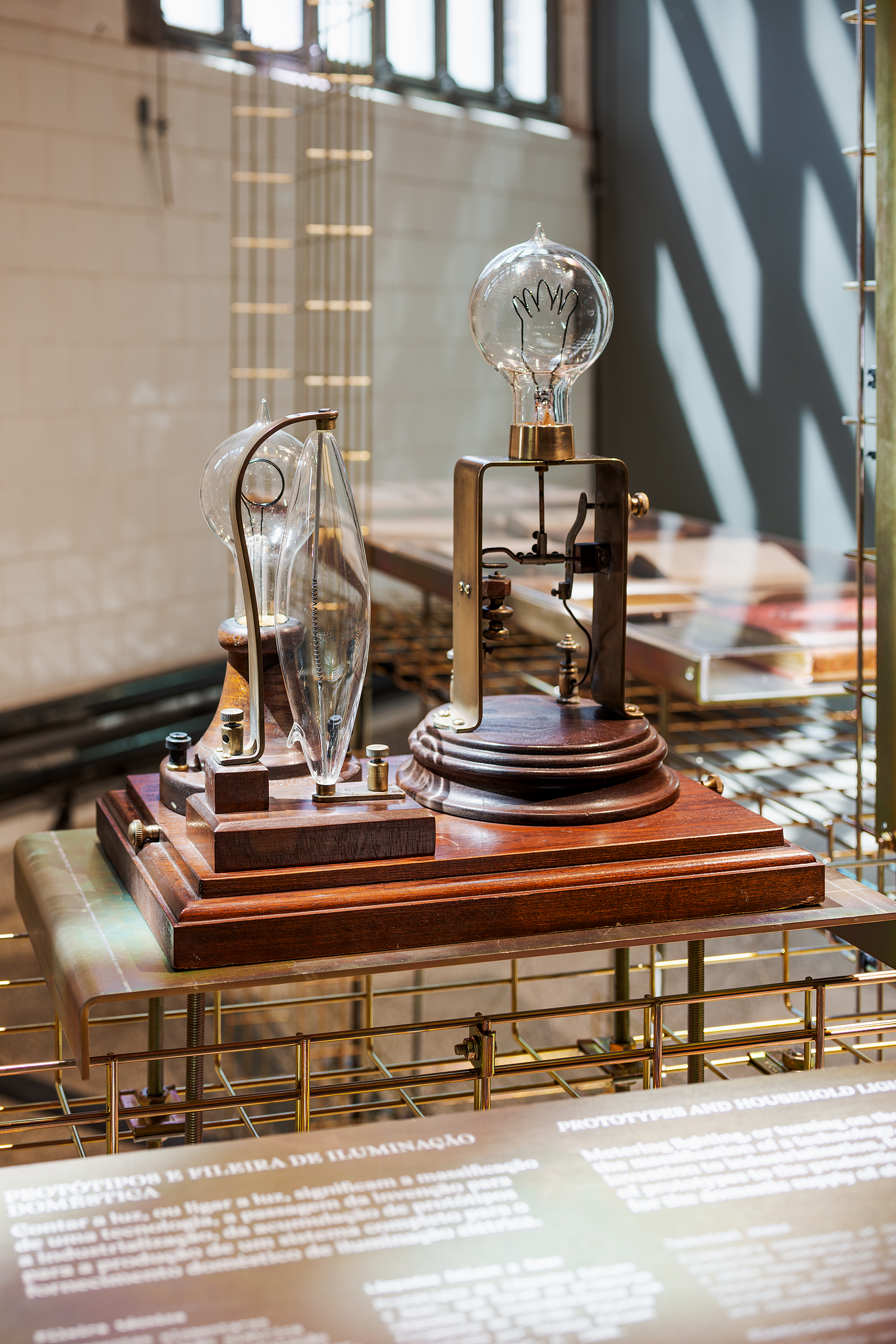
EP. 2
JANZ METER, 1957
First Electromechanical Meter Made in Portugal
Making electricity a product of mass consumption implies massifying metering and its instruments: meters. The manufacture and certification of these electromechanical instruments required the repurposing of an ancient precision craft: watchmaking.
All these “clocks” placed outside the doors of homes, shops, factories, schools and offices needed to be reliable and precise, as their tallying had legal standing. So they had to be independently verified after assembly and properly sealed. The Janz meter of 1957 was the first such instrument manufactured nationally. Soon after, Boa Reguladora, in Famalicão, also adapted its production line of clocks and water meters to produce electricity meters.
|
MADE IN PORTUGAL
The great expansion of the electricity grid and of household consumption in the 1950s mobilised the national precision instruments industry to produce meters, both in the north, with Boa Reguladora, and in the south, with Bruno Janz.
ANATOMY OF A METER
Measuring energy use is akin to counting time, both today and prior to the electronic industrial transformation. The earliest domestically produced electromechanical meters were similar to the mechanical clocks of the time. Their parts were similar, with dials, discs and cogwheels, and their assembly and calibration required great precision. |
Precision crafts such as watchmaking are fundamental to the production of all such instruments. And just as the interdependence of our collective life needs uniform and shared time, so do we need uniform metering to equitably consume the energy that drives our society. But since it was not possible to adjust meters in every home after they were installed, and metering had and has legal value, the meters had to be calibrated individually and independently from the manufacturer. Before installation, it was up to the energy producer and distributor to check and certify meters with a tamper-proof seal. |
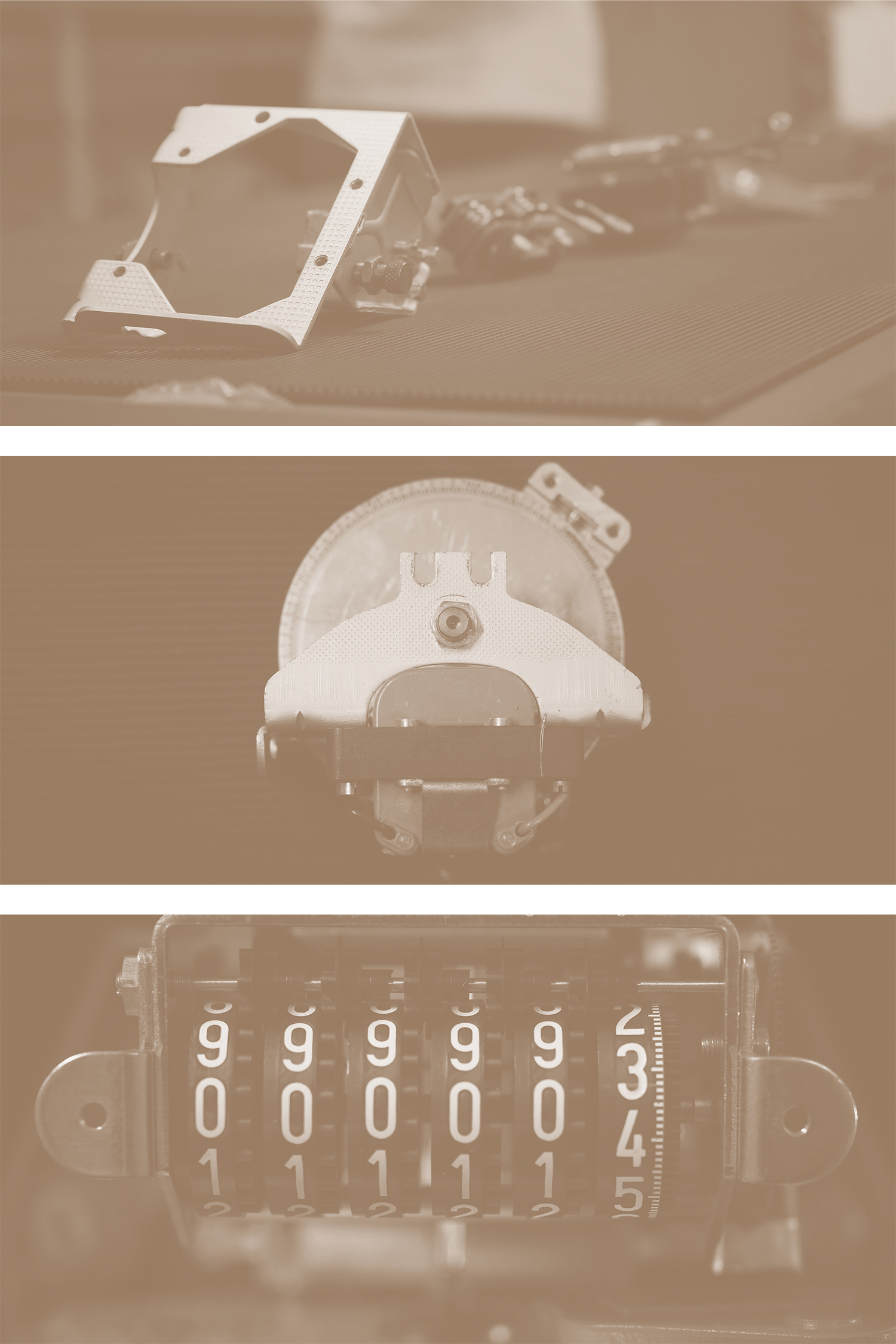
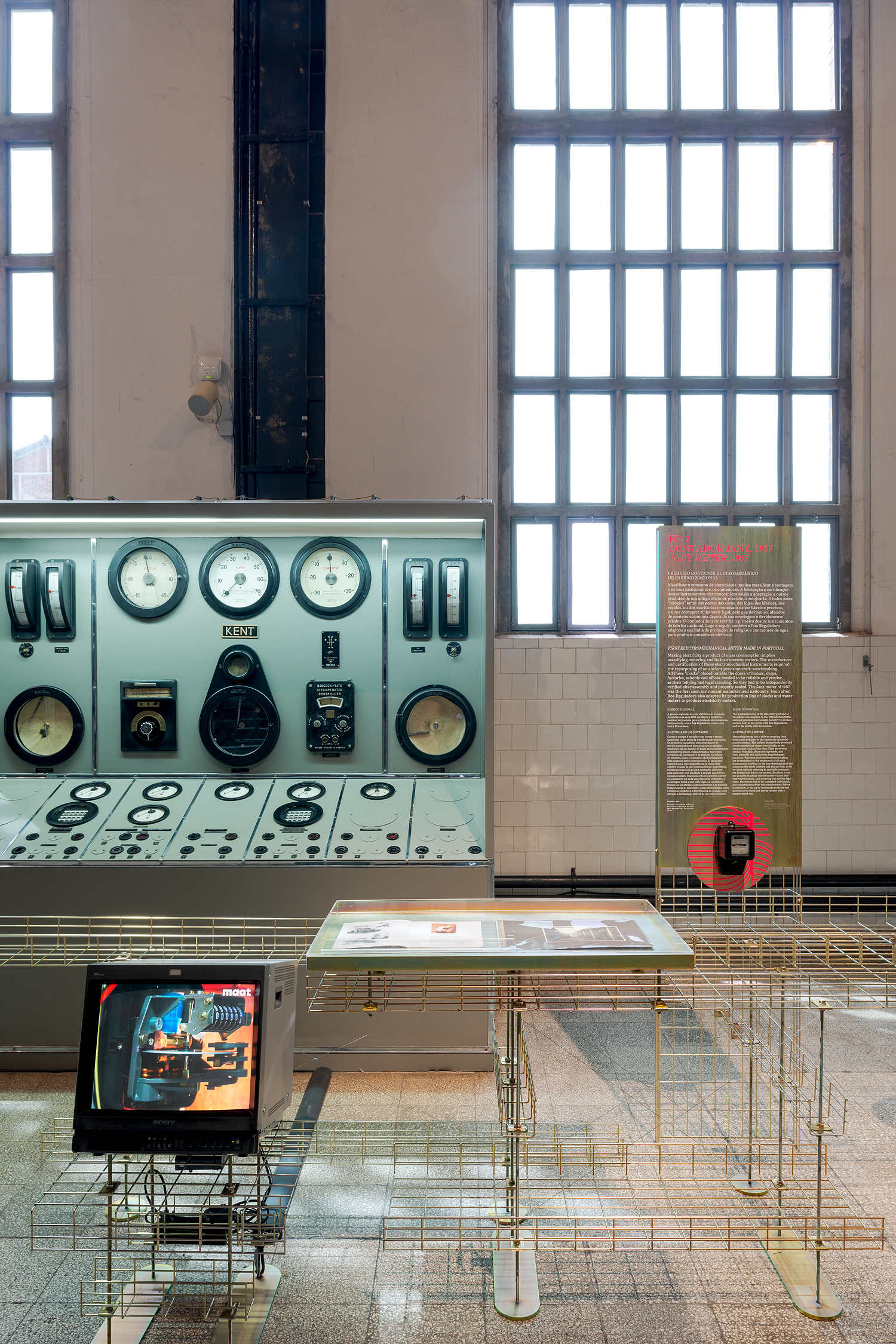
Display design by Pedrita + Furo. Photo: Daniel Malhão. Courtesy of EDP Foundation / maat.
EP. 3
ASTRONOMICAL METER
The Disenchanted Night
As the name implies, an astronomical meter can read the movements of the stars; or rather, more prosaically, it knows when the sun rises and sets in the different seasons of the year in order to regulate public lighting. This type of lighting is called “public” because it allows city life to continue after sunset, disenchanting the night and extending the use of collective spaces with new light. Although the same energy is used to illuminate private spaces and public spaces, this energy is metered differently, and these meters are “astronomical” so that the costs of public lighting are not. So that the lamp that illuminates the way home is in front of all the houses and guides all the paths.
Street Lighting
Public lighting is the light of our streets, squares, alleys, and avenues. It is the night illuminated by arc lamps and incandescent bulbs, housed in lanterns, and suspended from consoles or on poles. It is the light that illuminates the magic time of shop windows and signs, of advertising and the artifice of night life.
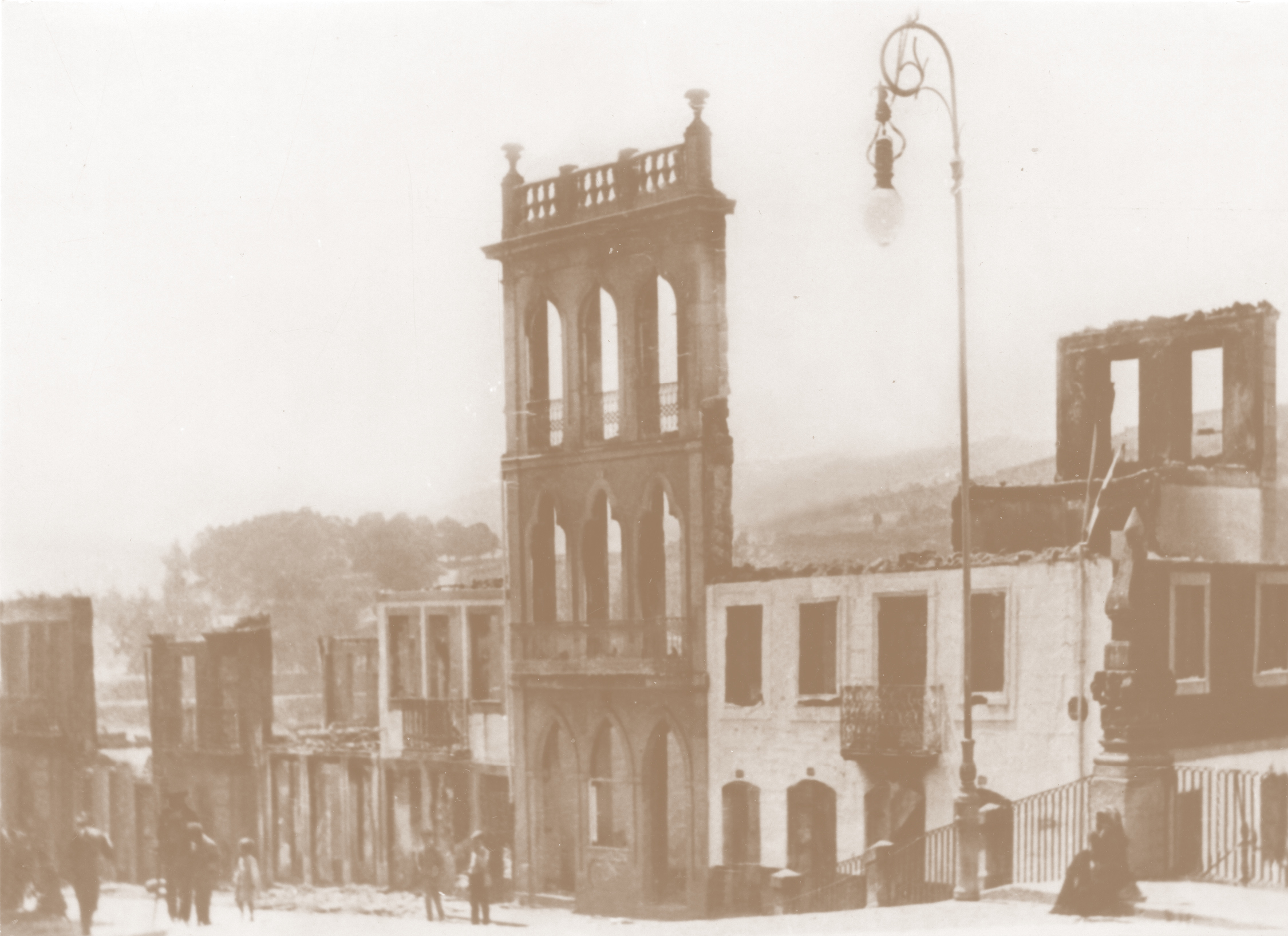
Arc lamp. Lamego, 1911.
-
Neon signs from various commercial establishments that have gone out of business. From the collection of the project Letreiro Galeria, which has rescued, safeguarded and preserved deactivated signs since 2014 with the aim of creating a museum where the public can all enjoy a graphic memory of the city that is disappearing. Photo: Daniel Malhão. Courtesy of EDP Foundation / maat.
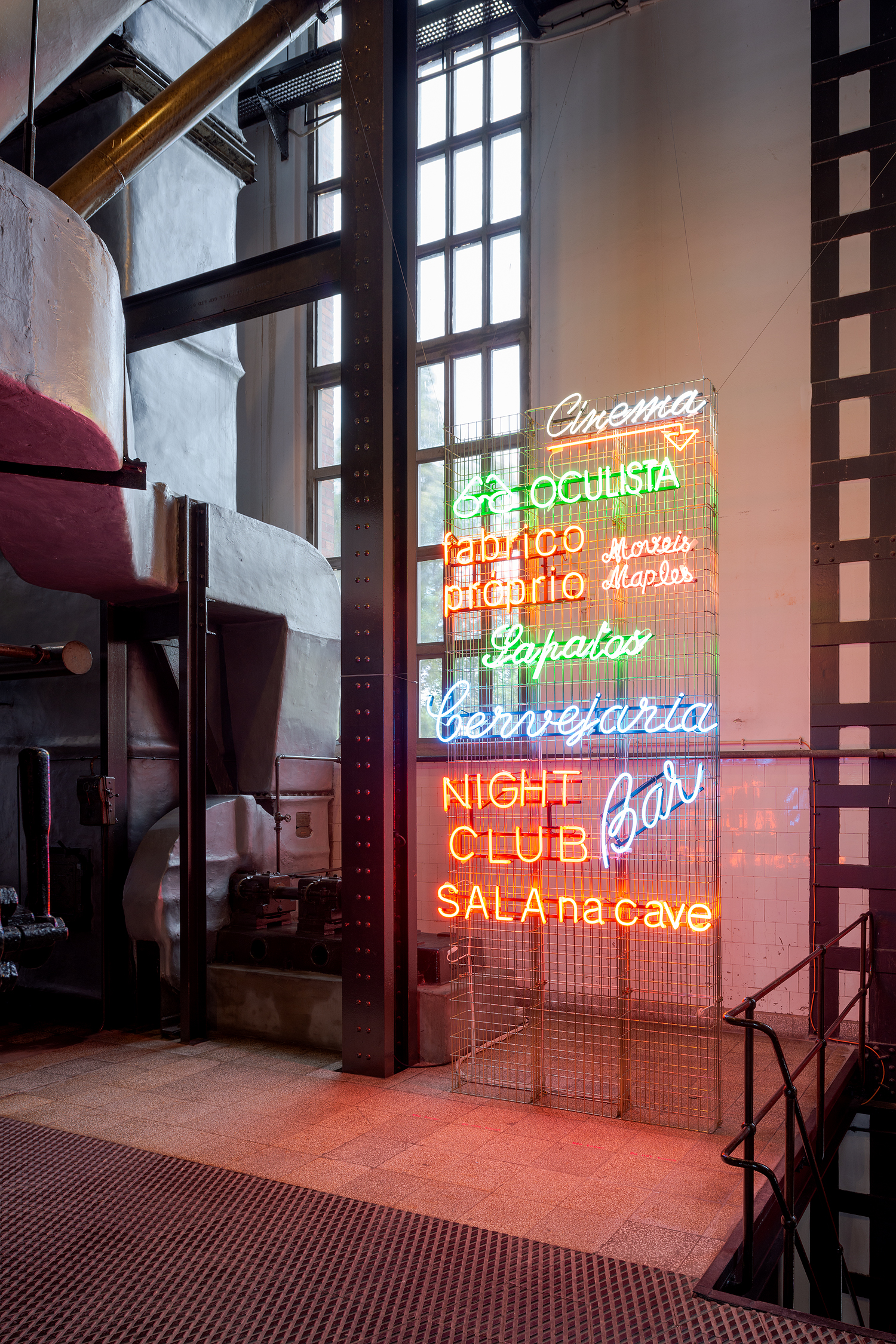
EP. 4
WALLBOX
A Meter for Shared Spaces
Electric transport is clean and silent, and increasingly present in our public spaces. As a result, the charging network for these vehicles is also increasingly widespread. The vast majority of individual charging has found a place in the common spaces of our garages and parking lots, destabilising a metering system that measured energy consumption by each individual unit of residence. By individualising metering by vehicle, the WallBox allows for greater equity and awareness of our energy consumption. That said, a more accurate picture of individual energy consumption still needs to account for the energy consumed in the outlets of the collective spaces of our daily lives.
|
EDP EV.Charge solution The EDP EV.CHARGE solution integrates electric vehicle chargers with a software that provides users of electric vehicles a more flexible and interactive charging management platform, promoting detailed and individualised analysis of charging in private spaces such as condominiums, individual private residences and companies, as well as detailed information regarding the public charging network.
|
Cooltra electric scooter, 2021 Cooltra is Europe’s leading company in sustainable mobility solutions on two wheels. Of its fleet of 16,000 vehicles, 64% are green-powered electric scooters that leave no carbon emissions footprint. Courtesy of Cooltra |
|
Gira electric bike, 2018 Equipped with an integrated 12.5 Ah (Ampere-hour) battery and offering 25 hours of autonomy. |
Enfield 8000 The first electric car in Portugal, manufactured in 1975. It was acquired by Companhias Reunidas de Gás e Electricidade in 1976. |
EP. 5
THE C METER, 1969
The Meter of Modern Life
For a long time, the promise of modern electrical comforts such as broadcast radio and television, heating, cleaning, refrigeration, and food preparation was just a dream. The C meter (“C” for Comfort) was advertised as the thing that finally made possible the “orchestra” of household appliances that fulfilled this promise. Installed outside the home, the C meter did not disturb the comfortable intimacy it created. Advertising also invented the conductress of this “orchestra” of domestic bliss: the electrified housewife, mistress of a kingdom that required even more work with each new appliance, from hoover to iron, from toaster to washing machine. After so much promise, expectation and advertising, it was the emergence of consumer credit that finally made it possible to orchestrate this new domestic comfort made up of electric appliances.
 |
THE C METER
At last, a meter capable of recording and controlling the energy of domestic modernisation. Electricity at the service of the comfort, convenience and well-being provided by all the new electrical appliances on offer. And the first meter installed outside the home to extend this comfort to metering.
Advertising materials for the C meter, from 1969 onwards. CRGE collection (Companhias Reunidas de Gás e Electricidade). |
|
|
HOUSEHOLD APPLIANCES
Appliances are the electrical devices that facilitate household chores: from entertainment and cleaning, to personal care, heating and food preparation and storage. The meter recorded the energy consumption that powered wireless radios, televised windows into the distance, plug-in fireplaces which didn’t produce smoke, boxes in which it was always cold, and personal supplies of hot and cold air. A new comfort derived from the objects which make the living room the place where the television or the radio is, and the kitchen the place where the fridge or the mixer is.
Publicity leaflets and posters about the use of electricity between 1930 and 1960. CRGE collection (Companhias Reunidas de Gás e Electricidade). |


EP. 6
COIN-OPERATED METERS PAYING THE TARIFF
Coin-operated or pre-paid meters dispense with contracts and fee collection and allow people to consume energy by the “kilo”, like buying a kilo of flour or rice. But connecting a fridge to one of these meters make the downsides of discontinuous supply obvious. Ensuring continuity of supply, and thus keeping the freezer always on, has other costs, which are multiplied by the tariff and reflected in the bill. The tariff does not sell the wind that blows, the water that flows or the sun that shines, which belong to everyone; what it sells are units of energy priced according to the amount consumed. Ad contrarium, a coin-operated meter makes us more aware of the value of the continuity that allows us to turn on the light when we get home.
|
CONTRACTS
Continuity of consumption and post-service payment requires a supply contract and the installation and rental of an instrument capable of mediating disagreements between the parties: the meter. The meter reading times the tariff, which depends on the power contracted, the hours of use and total consumption, results in the total sum due for the service. |
RECEIPTS
Receipts reconcile the meter reading with the billing, and detail how the contracting parties have fulfilled their duties. These receipts can be monthly, quarterly or weekly, always referring to a duration, a quantity calculated at regular time intervals. They are evidence of continuity of service. |
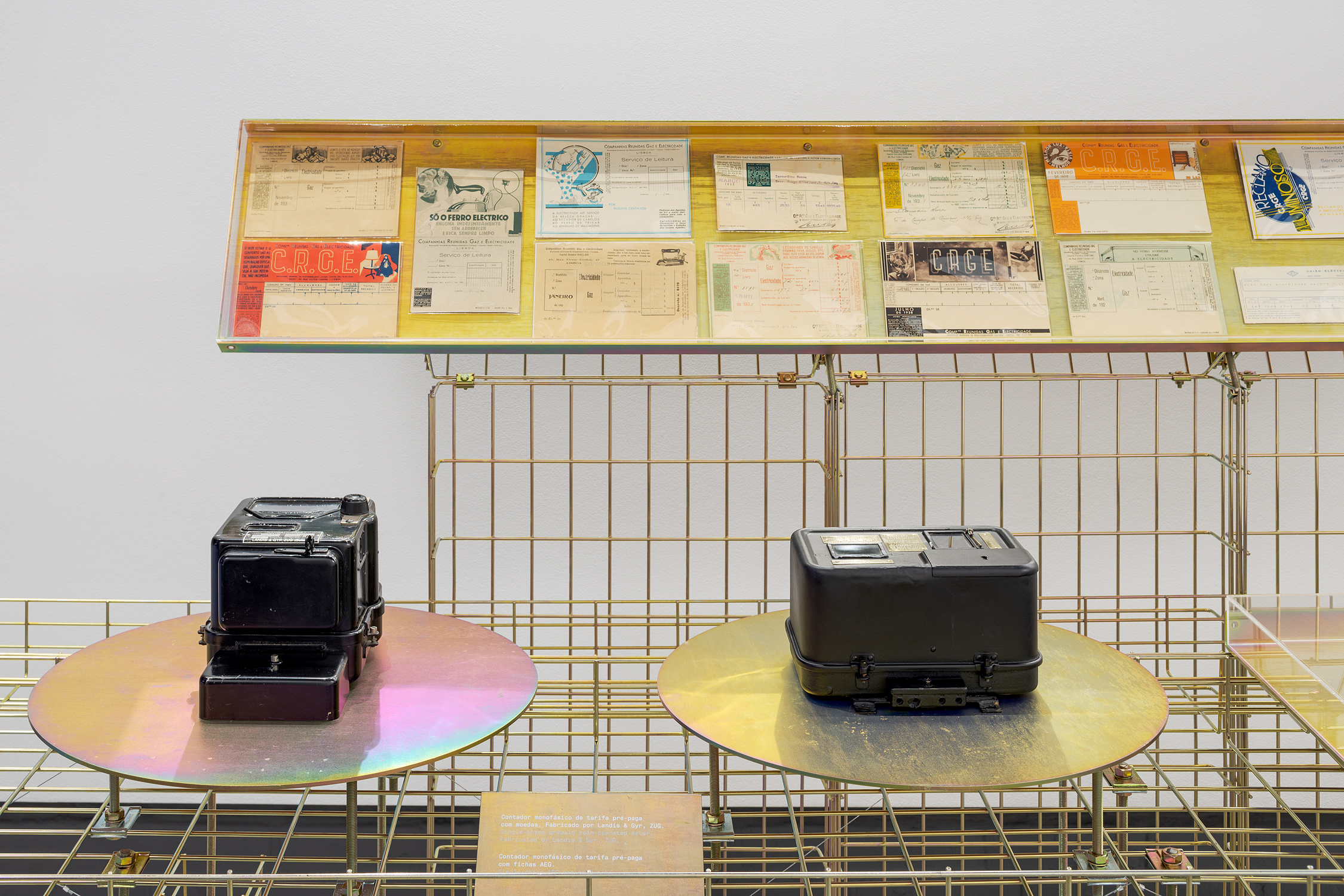
|
Display design by Pedrita + Furo. Photo: Daniel Malhão. Courtesy of EDP Foundation / maat. |
|
EP. 7
FLESH AND BLOOD METERS
The Difficulties of Bill Collecting
Alongside mechanical meters there were also flesh and blood meters; that is, people who would come and read the meter and collect payment for our power usage. Wearing a uniform and an ID, it was the meter reader-collector who interacted most closely with consumers. He was also the best witness to the myriad of ways some customers found to get around metering and payment. Collectors would come across tricky schemes big and small, outright swindling, meter tampering and illegal connections on a daily basis. This phenomenon provides a good counter-image of the system, with such narratives offering a window onto the social and human difficulties of making the system work.
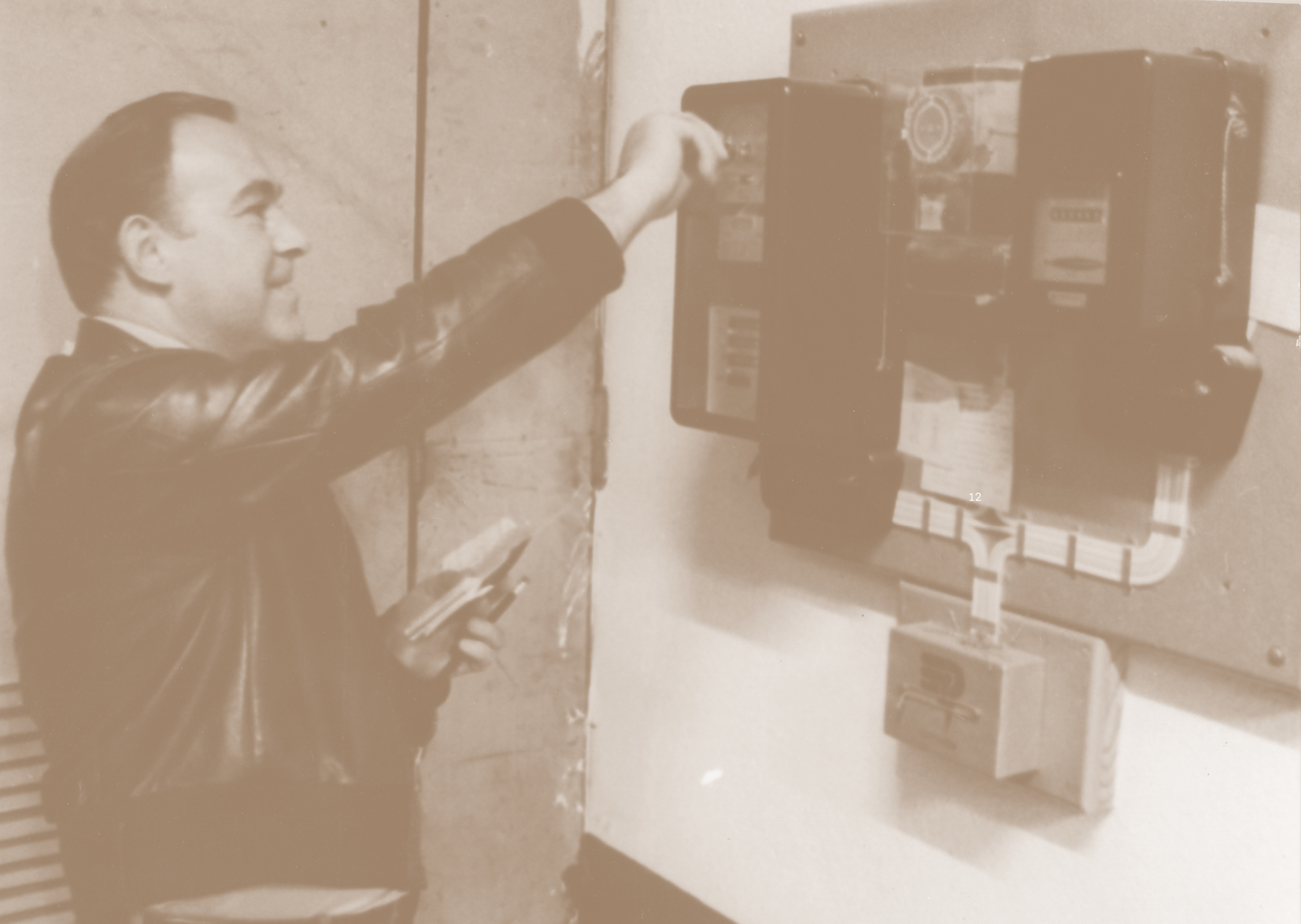
|
Adelino Santos Costa, electricity meter reader and payment collector for EDP –Electricidade de Portugal, Public Company, Lisbon area, 1980s.
Electricity meter readers and payment collectors at the Alcochete branch of the União Eléctrica Portuguesa.
Photos from the collection of the EDP Foundation’s Documentation Centre. |
|
EP. 8
THE MULTI-RATE METER
The River Flows Day and Night
How can we make the use of the hydroelectric energy of the river, which flows day and night, compatible with the rhythms of daily life? With a meter that encourages to balance the consumption through a multi-rate tariff that rewards consumption in off-peak ‘empty’ hours. These objects tell of the strange intimacy between the prodigious force of a river, the turbines of the power plant that transforms it, the regulation and synchronisation that makes it possible tomanage multiple dams, the synoptic tables that govern the network in real time – a complex system of production, distribution and consumption that needs to consume all the energy thrown into it – and the thousands of washing machines that lull the nights of thousands of homes.
DOURO MASTER PLAN
Like the majestic regional development plan for the Tennessee River Valley, devised in response to the Great American Depression of the late 1920s, this 1953 Master Plan, commissioned by the Portuguese government from the consultants Knappen Tippetts Abbett McCarthy, was the technical basis for this gigantic effort to put nature to work.
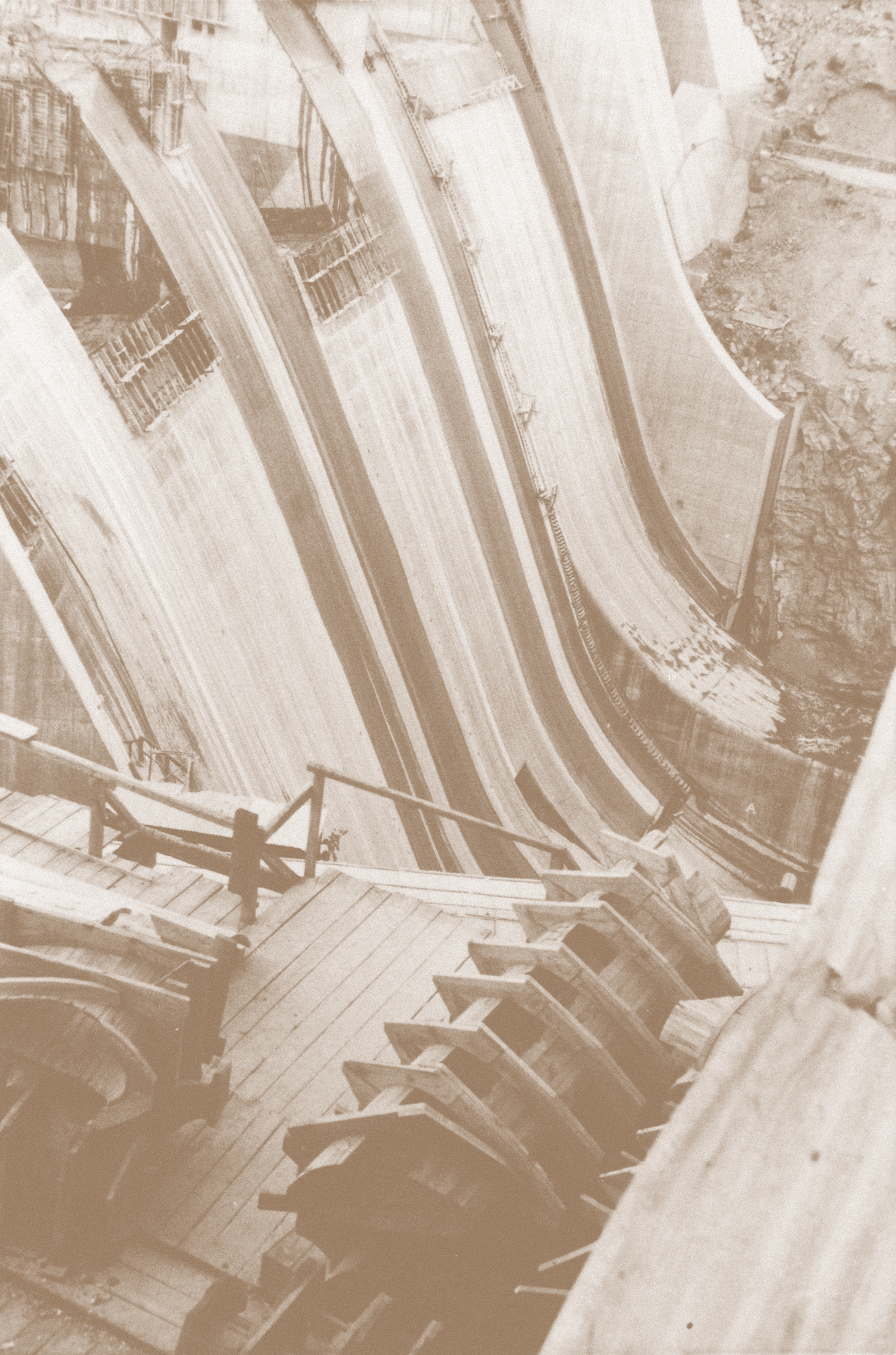
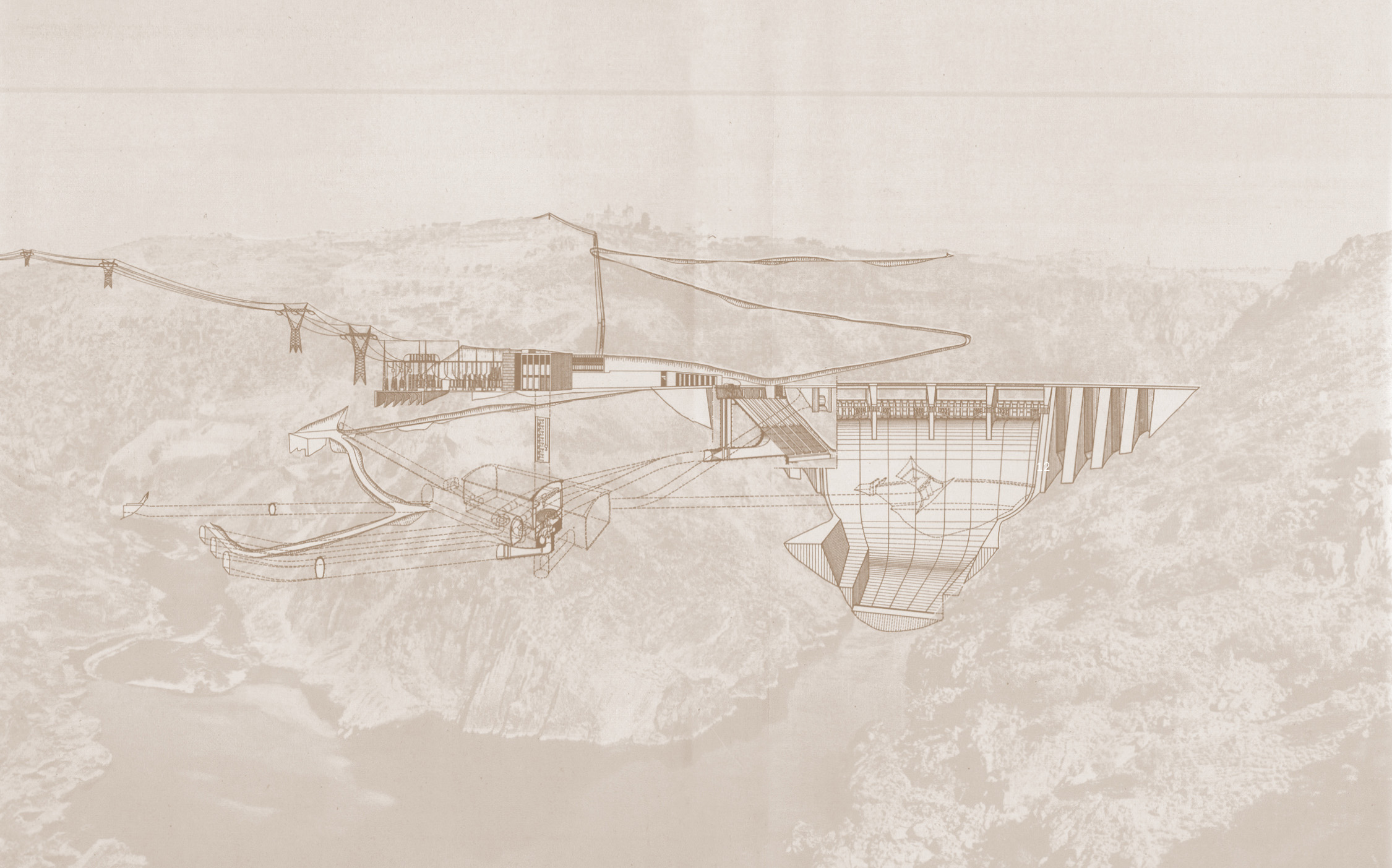
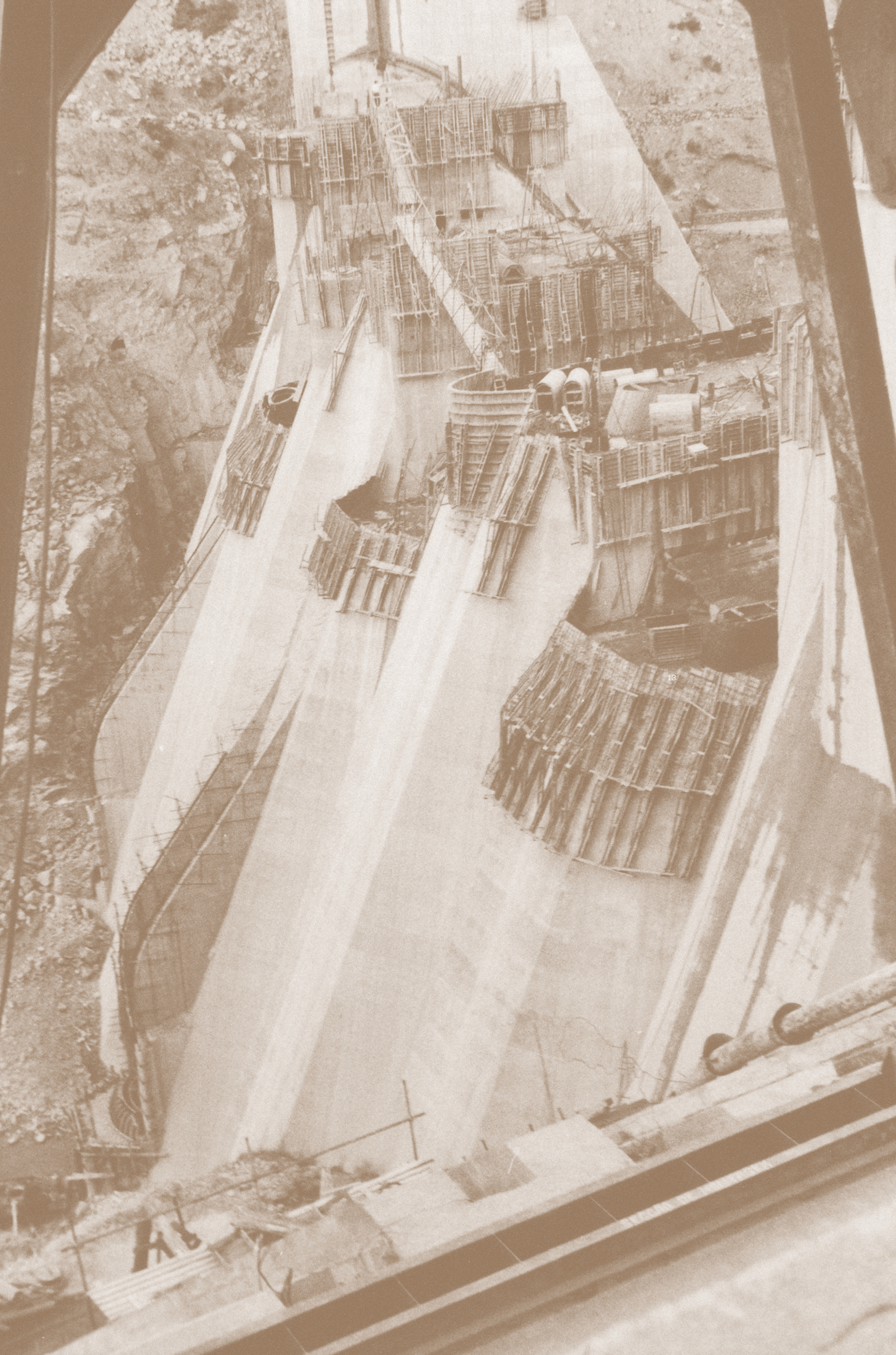
Construction of the Picote dam, 1954–1958. Fundo Ferreira Dias, EDP Foundation Energy Heritage Collection.
Scheme published in the book “Picote: Hidro-Eléctrica do Douro”, Porto, 1959. EDP Foundation Documentation Centre.
EP. 9
REACTIVE ENERGY METER
The Energy of Production
Measuring the difference between the energy that is generated in the power plant alternators and that which reaches the consumer is like measuring the water that is lost in the pipes from the source to the tap at home: we need to account for the cables, lines, transformers and electric circuits, a whole panoply of technology that enters the power chain that is contracted and paid for. But measuring the energy that a house consumes is not the same as measuring the energy that drives a factory. The motors of large consumers generate so-called reactive energy, without which such appliances cannot function and which “takes up space” in the system and increases losses in the grid, influencing voltage levels in the grid and in the installations themselves. Reactive energy meters measure this other form of energy.
MAPPING THE GRID
With the construction of large hydroelectric power plants in the various water systems (Zêzere, Cávado-Homem-Rabagão, Douro, Tejo) the cycle of hydroelectricity which characterised the activity of the Portuguese electricity sector between the 1950s and 1970s began. The electrical transportation grid in this period reveals the direction of the flow of large masses of energy from the hydroelectric power plants in the northern and central systems to the Lisbon and the southern regions of the country. The model established in this period was that of the “scale” energy production from large plants, conducted through the National Transportation Grid and the High, Medium and Low Voltage Distribution Grids, which continues to this day.
|
Map of the electrical grid of CNE – Companhia Nacional de Electricidade, 1953. |
Map of the electrical grid of the CNE – Companhia Nacional de Electricidade, 1950s.
Both maps from the collection of the EDP Foundation’s Documentation Centre. |

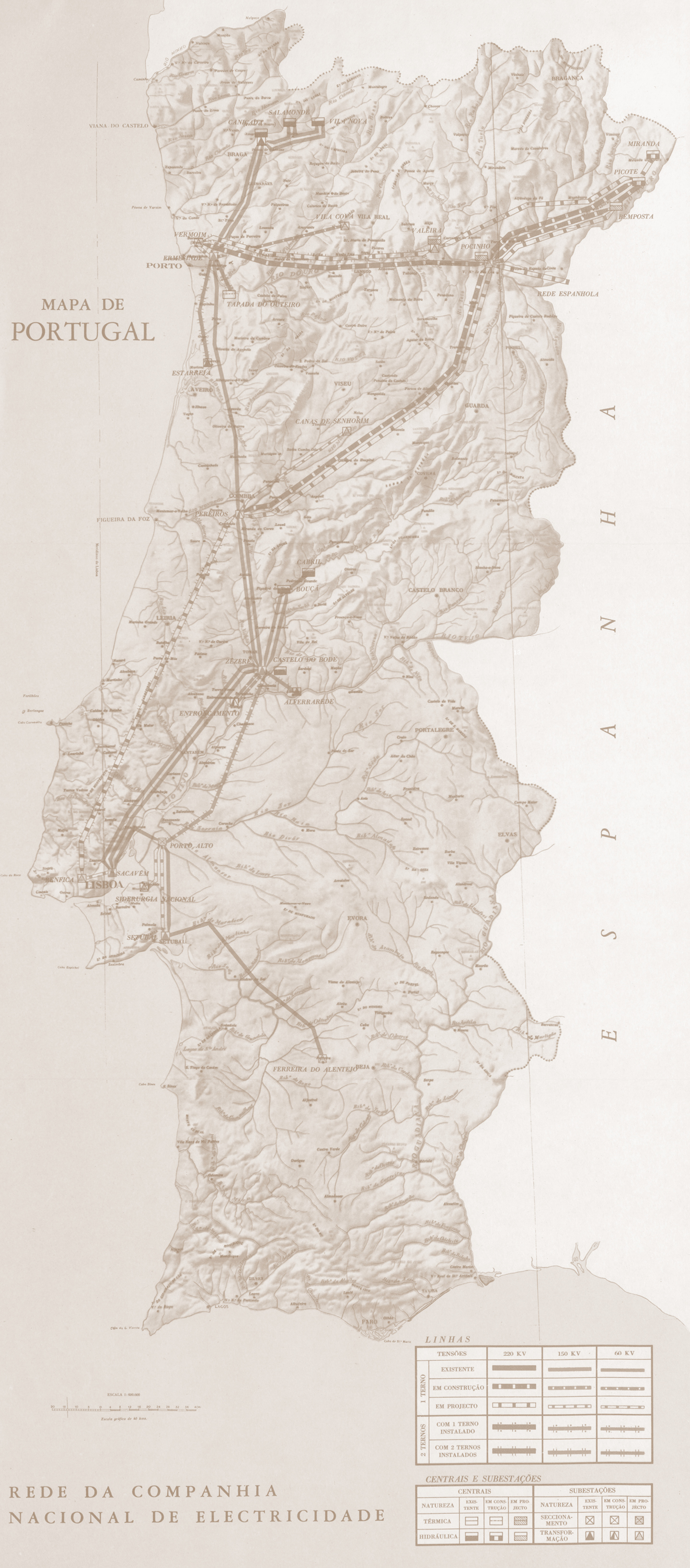
EP. 10
TWO-WAY METERING
Metering the Energy Transition
The energy transition currently underway reorganises the flows of the energy grid and of the energy market, generating cleaner, renewable energy from other sources and allowing the consumer to also be a producer, through microgeneration and self-consumption. This new social contract, in which the consumer can be a producer or even self-sufficient, and in which energy seeks not to compromise our common future, requires meters that work in two directions, better suited to its multiplicity and reciprocity. The simultaneous metering of consumption and production, metering use when you need it and sharing when you have too much, requires a new legal framework, a decree-law that says how this new form of cooperation should work.
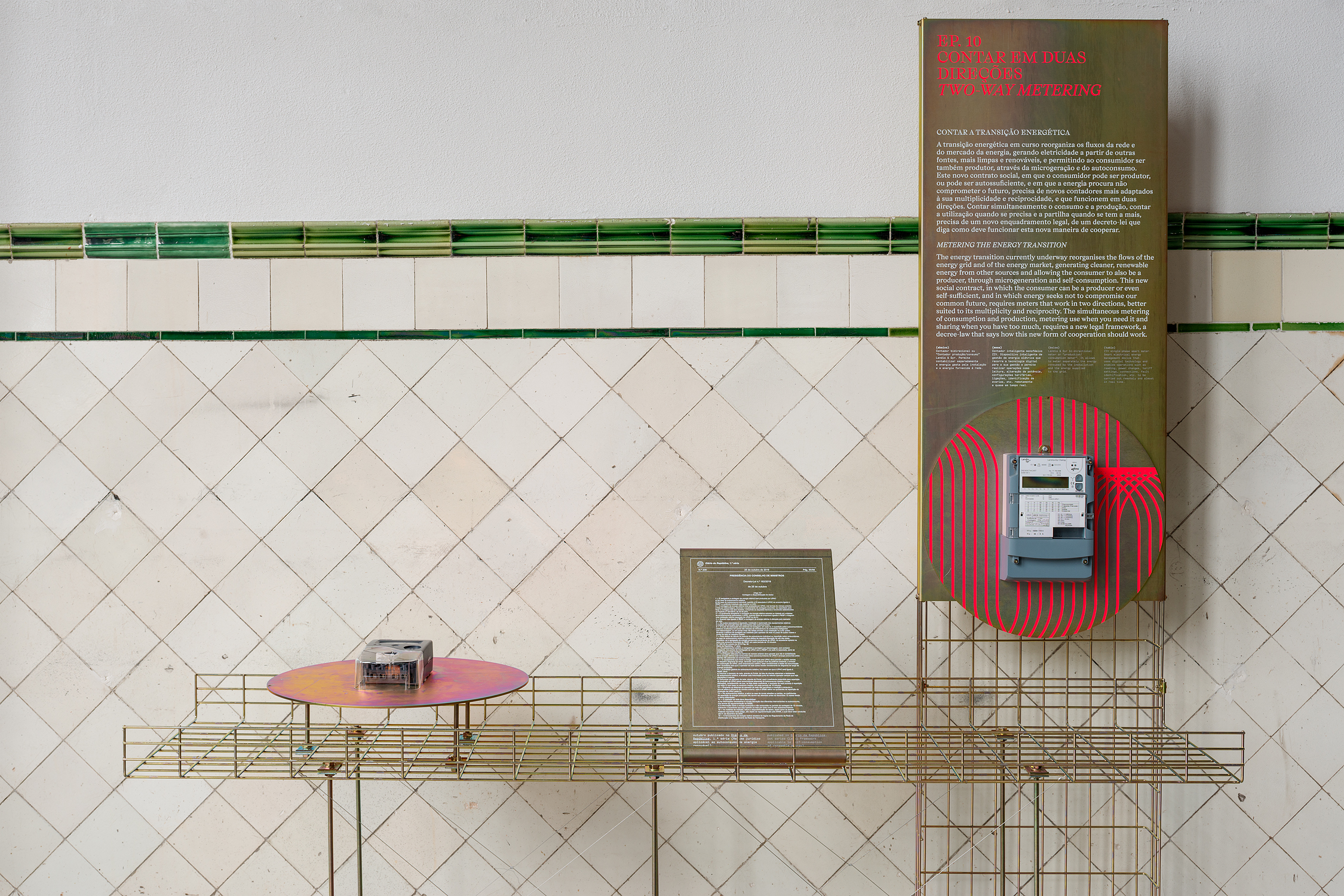
All views of the exhibition “Storytelling Meters” (maat, 24/04–07/03/2022) by Daniel Malhão. Courtesy of EDP Foundation / maat.
Joaquim Moreno graduated in Architecture at the University of Porto, and holds a Master’s from the Barcelona Technical School of Architecture and a PhD from Princeton University. He was co-curator, with the philosopher José Gil, of the Portuguese representation at the Venice Architecture Biennial 2008, and, with Paula Pinto, the exhibition Guido Guidi – Carlo Scarpa. Brion Tomb (Garagem Sul/CCB, Lisbon, 2015). More recently, he curated The University Is Now on Air: Broadcasting Modern Architecture (Canadian Centre for Architecture, Montréal, 2017) which examined a key experiment by The Open University to mobilise new media environments for distance and adult education.
In 2021, maat inaugurated a new programme around the EDP Foundation collections. Both collections – Portuguese Art and Energy Heritage – are regularly presented within the spaces of Central through an invitational series of curatorial projects by diverse experts, researchers and thinkers that are intended to engage with this reservoir of knowledge from multiple intellectual vantage points. By providing alternative conceptual and scholarly interpretations, the programme aims to bring forward new readings to enlighten historical, social and technological narratives that go beyond those of the collection itself.
Conceived by the architecture historian and curator Joaquim Moreno, Storytelling Meters (maat, 24/04–07/03/2022) is the first exhibition that uses various archival artefacts – visual items, objects and appliances – from the EDP Foundation Energy Heritage Collection. The EDP Foundation Energy Heritage Collection was started in 1998. It gathers around 3,500 pieces linked to the history of electricity in Portugal, some of them dating back to the 19th century. These include items of domestic, personal and industrial use, including machinery and equipment – measuring devices and meters, household appliances, illumination and lab equipment – as well as a vast collection of documents.


